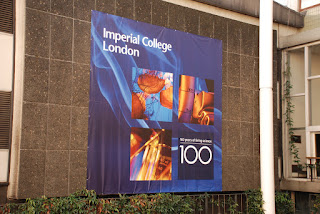London's Look at Medicine's Future
Breakthrough in Tissue Regeneration thru 3D Printing
Researchers at the Imperial College London have developed a way to 3D print soft biological structures. They match the structure and softness of body tissues. As a result researchers say these structures could be used to build life-like models of the brain and lungs for medical procedures. Specifically to form scaffolds that act as a template for tissue regeneration - allowing damaged tissue to regrow.
Scaffolds to Rebuild and Heal
The Imperial College medical scaffolds are super soft. The scientists don't believe they have the issues that normally face tissue replacement transplant procedures like rejection by the body. This innovation has many significant applications for tissue or organ transplants.
Future of Medicine
This research is pointing the way to the future of medicine. 3D printing of soft biological structures may lead to the seeding of neuronal cells involved in the brain and spinal cord to restore tissue and function. It may also lead to the creation of body parts and full organs. A unique component of the Imperial College London research is cryogenics. They rapidly freeze and thaw components involved in the 3D printing process to create the super soft biological structures.
Researchers at the Imperial College London have developed a way to 3D print soft biological structures. They match the structure and softness of body tissues. As a result researchers say these structures could be used to build life-like models of the brain and lungs for medical procedures. Specifically to form scaffolds that act as a template for tissue regeneration - allowing damaged tissue to regrow.
Scaffolds to Rebuild and Heal
The Imperial College medical scaffolds are super soft. The scientists don't believe they have the issues that normally face tissue replacement transplant procedures like rejection by the body. This innovation has many significant applications for tissue or organ transplants.
Future of Medicine
This research is pointing the way to the future of medicine. 3D printing of soft biological structures may lead to the seeding of neuronal cells involved in the brain and spinal cord to restore tissue and function. It may also lead to the creation of body parts and full organs. A unique component of the Imperial College London research is cryogenics. They rapidly freeze and thaw components involved in the 3D printing process to create the super soft biological structures.

%20(1)%20(1)%20(3)%20(2)%20(2).jpg)


Comments
Post a Comment